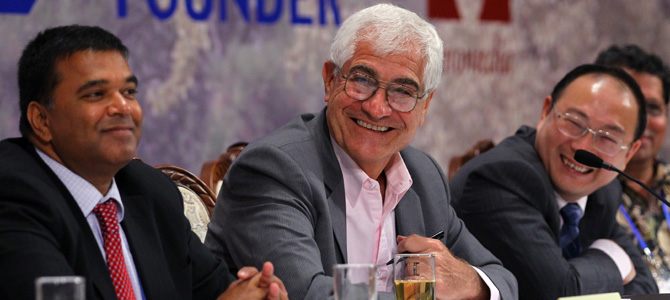
Strict targets set for mines and smelting operations
China will shut down about one-fifth of its rare earths production capacity under new industry rules, but analysts fear that their strict implementation could see production further eroded.
Mixed-type rare earths mines, mostly located in North China, will have to have a minimum annual production capacity of 20,000 metric tons a year and smelting companies will have to ensure an annual output of at least 2,000 tons, according to a statement by the Ministry of Industry and Information Technology on Monday.
Up to one-third of the 23 mines and about half of the 99 smelting companies will fail to meet the new rules, said Jia Yinsong, director of the ministry’s rare earths office.
He estimated that about 20 percent of the country’s rare earths capacity will be eliminated. However, analysts are concerned about how the new rules will be implemented.
“More than 50 percent to 70 percent of companies will fail to meet the environmental requirements if the policies are to be carried out strictly,” Wang Siyu, an analyst at umetal.com, an industrial information platform, said.
“To cap the output is more effective than eliminating the capacity for the development of the industry.”
But Wang stressed that the rules will not affect China’s exports.
“Most companies that won export quotas have met the requirements,” he said.
Rare earths, a group of 17 elements, are essential in the manufacture of an array of high-tech products, including wind turbines and hybrid cars. A downturn in the wind power and electric car industries has weakened demand.
China is involved in trade disputes concerning the exports of rare earths.
The World Trade Organization formed a special group in July to investigate the issue after the European Union, the United States and Japan complained over what they claimed were stringent Chinese export controls.
China, which has 23 percent of the world’s reserves of rare earths, accounts for more than 90 percent of the world’s supply.
Smuggling and weak demand have led to a decrease in the amount of rare earths exported from China.
In the first half of the year, the amount of rare earths legally exported from China decreased by 42.7 percent year-on-year, falling to 4,908 tons.
If that trend continues, fewer than 10,000 tons of rare earths will be legally exported from China this year, far less than the 31,130 tons that can be exported under a quota set by the Ministry of Commerce.
Since 2007, China has strengthened both its rules governing the production of rare earths and its export regulations and has set export quotas every year.
Jia said the government will take measures to shut down unqualified companies and will offer compensation if necessary.
The Ministry of Industry and Information Technology said the new rules will protect the environment and promote industrial restructuring.
A leading miner said the rules were necessary.
“China needs to cultivate large-scale and competitive companies to follow a regulated path and curb illegal extraction,” said He Jilin, chairman of CNMC (Ningxia) Orient Group Co Ltd, a subsidiary of China Nonferrous Metal Mining (Group) Co Ltd.
He said that the new rules will help crack down on smuggling. In 2011, rare earth imports recorded by other countries were 1.2 times more than the official data from China.
Some industrial insiders and analysts worry about the effectiveness of the new rules.
“The government is making efforts to help the industry develop in a healthy way. The move will influence the prices to some extent, but not much,” said Gong Bin, chairman of the Ganzhou Qiandong Rare Earth Group Co Ltd.
China cut mining rights for rare earths as average prices fell by more than half from 2011’s record levels. The price of neodymium oxide, which is used for magnets, was $360,000 a ton a year ago while its current price is $100,000 a ton.
Contact the writers at dujuan@chinadaily.com.cn and wangzhuoqiong@chinadaily.com.cn


 Washington to remain focused on Asia-Pacific
Washington to remain focused on Asia-Pacific RQFII target blue chips amid bear market
RQFII target blue chips amid bear market Australian recall for top two exporters
Australian recall for top two exporters China fears new car restrictions
China fears new car restrictions